"'Slum Clearance' was in 8mm. It was a record of the tearing down of tenement houses of the old type and showing them replaced with modern apartment buildings. Mighty interesting characters were shown, occupants of the slum tenements, children, etc. A very colorful sequence was built up in the early part of the picture. The latter part of the film is given over to the new homes and to suburban homes where the more fortunate of the slum dwellers moved. A fine document and an interesting picture." American Cinematographer, Feb. 1937, 73.
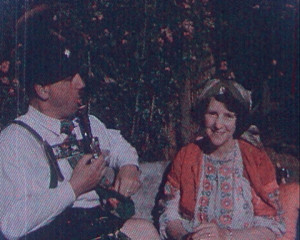
"Series of short films of gardens, landscapes and dogs. Footage includes the gardens at the Alliott house in Amersham and country locations near Amersham." (EAFA Database)
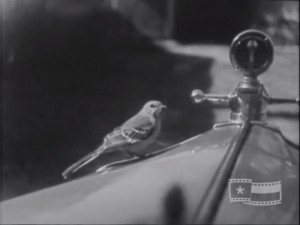
"This film includes material originally shot by the Tilley brothers in the 1910s and 1920s. W.H. Tilley later edited, compiled, and transferred these clips to 16mm, adding caption from his perspective forty years later. Scenes of note include a Krit Motor Car demonstration (1910s), a circus parade on Congress Avenue (facing the Capital, 1912) in Austin. While the brothers worked commercially in filmmaking, these clips exhibit their practice as amateur filmmakers that captured footage of personal experiences" Texas Archive of the Moving Image.
"Family footage shot in the grounds of a large house in Moorside; 1925. Some children and their nanny play on the lawn. A group of adults are seen having afternoon tea outside in the garden. Also includes shots of a young boy doing somersaults on a set of gymnast's rings. The camera remains stationary and several adults run into shot, in quick succession, and do a forward somersault using the rings. Even the nanny, who is in full uniform, has a turn" (NWFA Online Database).
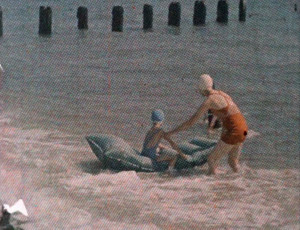
"Nineteen thirties holiday film of the Harrison family at a number of Suffolk coastal holiday hotspots; including Southwold, Lowestoft, the Broads (Beccles), and Thorpeness. This reel, with scenes in both Dufaycolor and black and white, shows the family having a jolly old time bathing, picnicking at their beach hut, horse riding, and sailing. Intertitles include “Susan on the li-lo” and “tea with the mater” (BFI.org.uk)
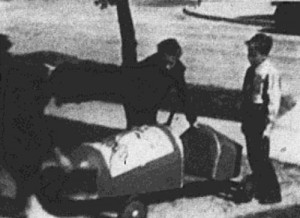
"Speedy May tells a pleasant tale about two boys who try to earn enough money to buy wheels for a new soapbox hot rod, a dreamboat which Dad has promised he will build for them if they will but supply the wheels. Failing in their financial efforts, the boys nevertheless are befriended by a neighborhood fireman who, with only two girls in his family, gives the lads four gleaming cart wheels he had been husbanding. The rest is up to Dad, and he fulfills his promise in a sparkling sequence of construction patterns filmed in his cellar workshop. Technically, this film is excellent, although its cinematic virtues are somewhat dimmed in its earlier passages by too deliberate a story pace. The appeal of the production, however, is more than assured by the sincere, natural portrayals of all hands, Harold Platt, the producer, plays his own role of father with ease and good grace. Dennis and Steve, the two youngsters, are artless and unaffected in their determined crusade for the new hot rod. And Captain Leonard Dobson as (and in fact) the fireman, tugs one's heartstrings with just the right appeal to make his son-less state seem credible. It is for his wife May that the new dreamboat - and this charmingly competent picture - are named" PSA Journal, Jan. 1955, 51.
"This was a sequel to his last year's picture 'Mischief.' It has the same characters, the dog, cat and bird with an addition to the dog and cat family." American Cinematographer, Feb. 1936, 73.
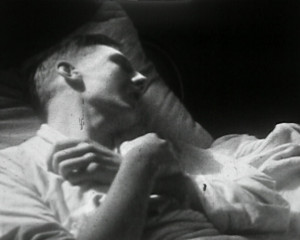
"Amateur filmmaker, cinema historian and railway engineer H.A.V. Bulleid presents a tale of paternal foreboding and rural tragedy. When a man dies, his widow seeks a suitable replacement to care for her and their son. Torn between two rival suitors - Dr. Vincent Moire and the mysterious Richard Grafton - the mother is unable to make a decision, despite her son expressing a clear preference for the doctor. When he is called away to town, Grafton seizes his opportunity and, wanting rid of the boy so that he might live with the mother in peace, shoves him over a cliff to his death. But when Grafton returns to the village, he spots the doctor - who has made an unexpected return - walking arm in arm with the widow. Distraught and defeated, Grafton claws at his neck and face in desperation, reaches into his jacket, pulls out a gun and kills himself." (EAFA Database)
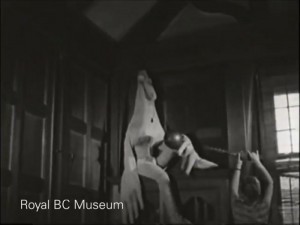
"Produced as a gift to Dorothy Burritt's husband, filmmaker Oscar Burritt (who was working in Toronto at the time), this is an offbeat study of life at their Vancouver apartment -- suite 2, 1960 Robson Street. The camera explores the apartment and the household memorabilia, and Dorothy is seen sitting for a portrait by painter Peter Bortkus. Later some friends drop by for a screening of Sacha Guitry's film Pearls of the Crown, followed by a party. Among the guests are Moira Armour, film editor Maureen Balfe, UBC student Stanley Fox, photographer Peter Varley, and an unnamed figure wearing a bird costume. Most of the people shown would have been involved with the National Film Society of Canada (Vancouver Branch). Suite Two won honourable mention (amateur category) at the first Canadian Film Awards in 1949." (BC Archives)
The film was restored in 1986 by the British Columbia Archives.
"Family scenes of playing in the garden at Westworth, Cockermouth. The children play in the garden with a trolley, an elderly couple walk in the grounds and the family pose for a group photograph." (NWFA Online Database)
Total Pages: 19